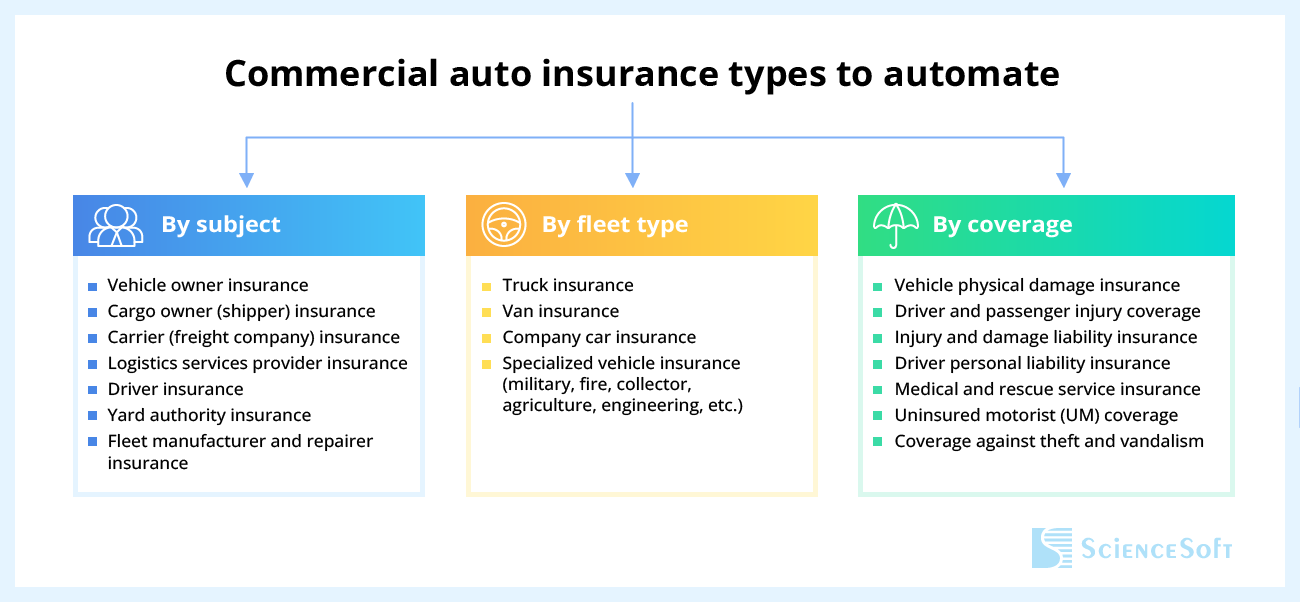Custom Software for Commercial Auto Insurance
ScienceSoft draws on 12 years of experience in developing custom insurance software to deliver reliable digital solutions tailored to the unique needs of commercial auto insurers.
Commercial Auto Insurance Software in a Nutshell
Commercial auto insurance software automates underwriting, policy issuance, claim processing, and other workflows throughout the business vehicle insurance cycle. Such solutions enable full visibility of fleet insurance activities and provide customer self-service options.
Custom commercial auto insurance software is the best choice for companies that want to automate complex service operations, streamline compliance with local regulations, and leverage new insurance models like usage-based business auto insurance or fleet microinsurance.
Custom solutions can introduce advanced capabilities like AI-powered risk pricing, secure blockchain-based recordkeeping of insurance transactions, or damage inspection using 3D modeling, IoT, and computer vision technologies.
A custom commercial auto insurance system can be smoothly and cost-effectively integrated with other business insurance solutions, corporate administrative software (incl. legacy tools), and third-party data sources (incl. specialized fleet telematics systems).
Commercial vehicle insurance types custom software helps automate

- Implementation time: 9–15+ months for a custom commercial auto insurance system.
- Development costs: $200K–$1.5M+, depending on insurtech solution complexity. Use our free calculator to estimate the cost for your case.
- Average payback period: <12 months.
Key Features of Commercial Auto Insurance Software
In ScienceSoft’s projects, we create secure, future-ready commercial auto insurance solutions with functionality tailored to our clients’ specific insurance process automation needs.
Below, our consultants share a sample feature set of a robust business vehicle insurance system to help you quickly assess the potential of custom software.
Learn How ScienceSoft’s Clients Benefit from Custom Auto Insurance Software
What makes ScienceSoft different
We achieve project success no matter what
ScienceSoft does not pass mere project administration off as project management, which, unfortunately, often happens on the market. We practice real project management, achieving project success for our clients no matter what.